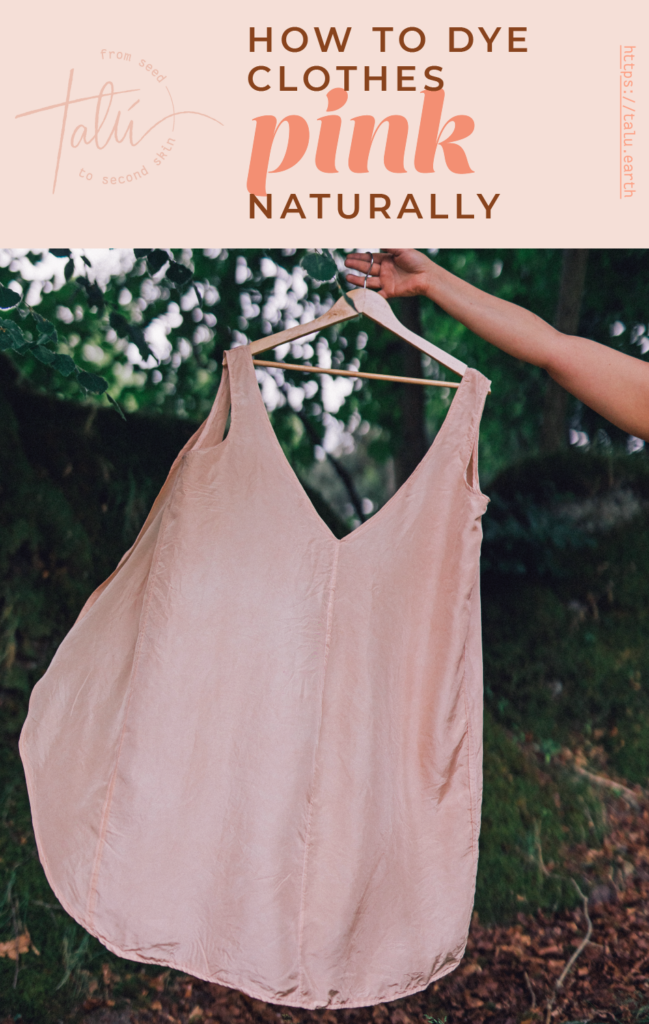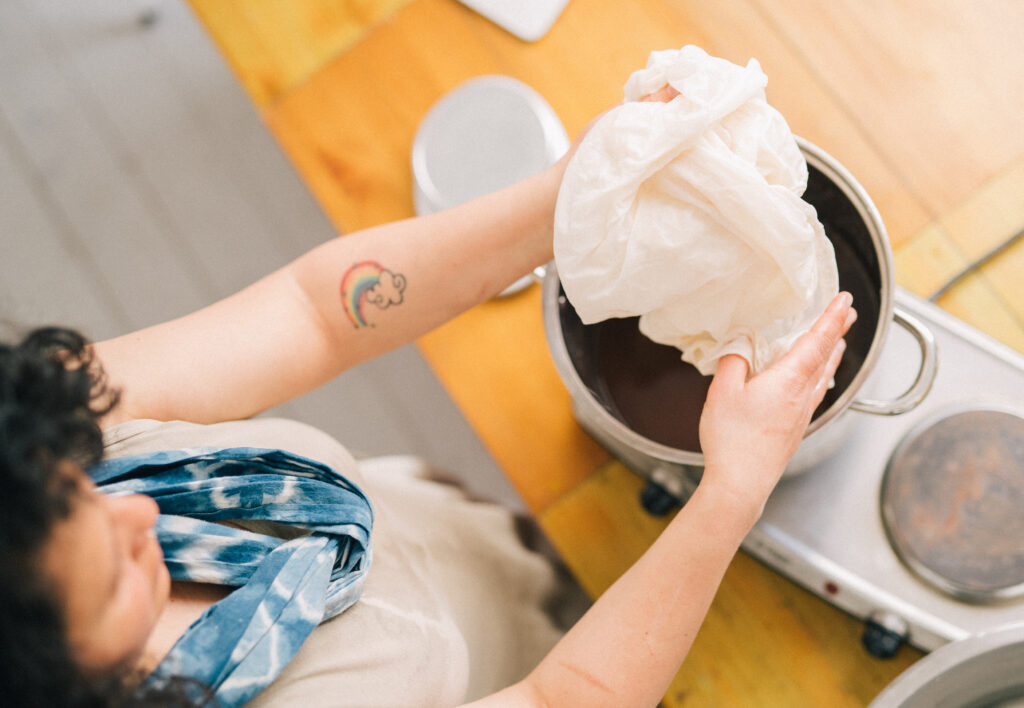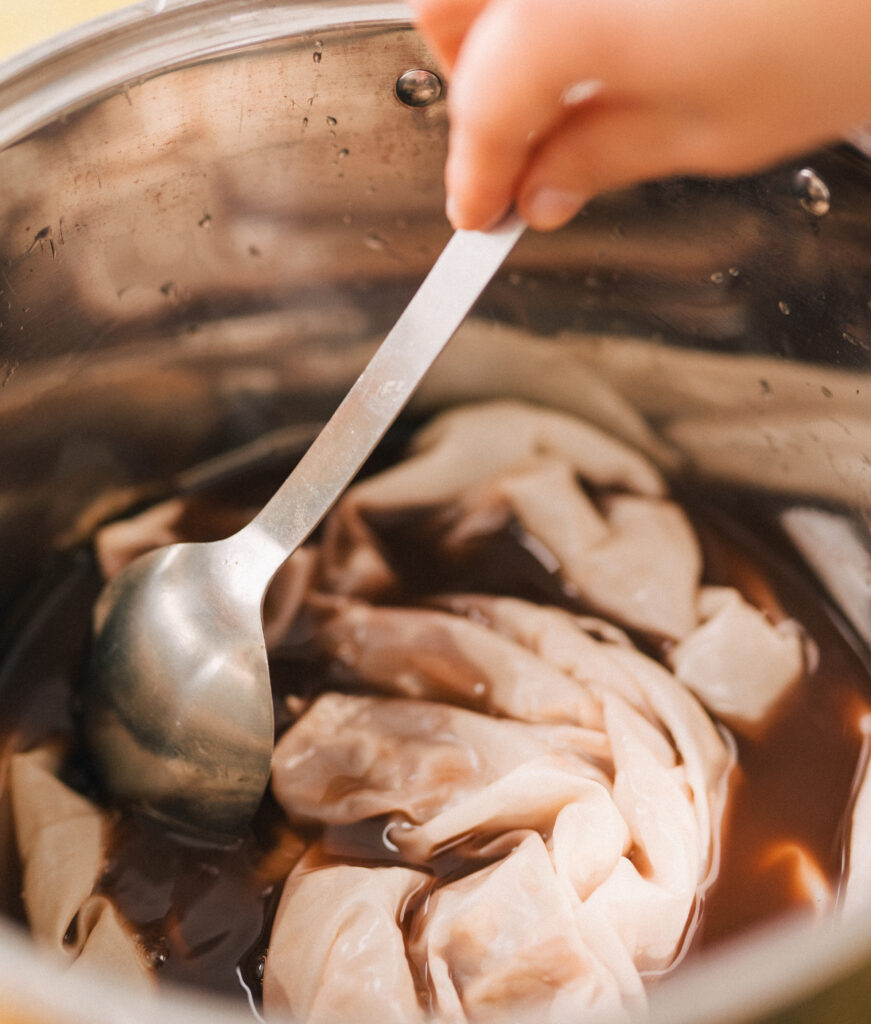Creating natural dyes creates beautiful colours and reconnects you to the Earth.
Dyeing clothes naturally is more than just a means to an end. It’s a reflective, slow, meditative, and sustainable process – one that I love. Learning how to dye clothes pink by dyeing with avocado is a wonderful first step into the world of Nature’s colour wheel.
I love pinks because there are so many ingredients you can use to create different shades, bringing an array of colour into your sustainable, ethical wardrobe.
Natural pink dye for clothes creates hues that are difficult to replicate with synthetic dyes, which makes the process even more special and personal to each person.
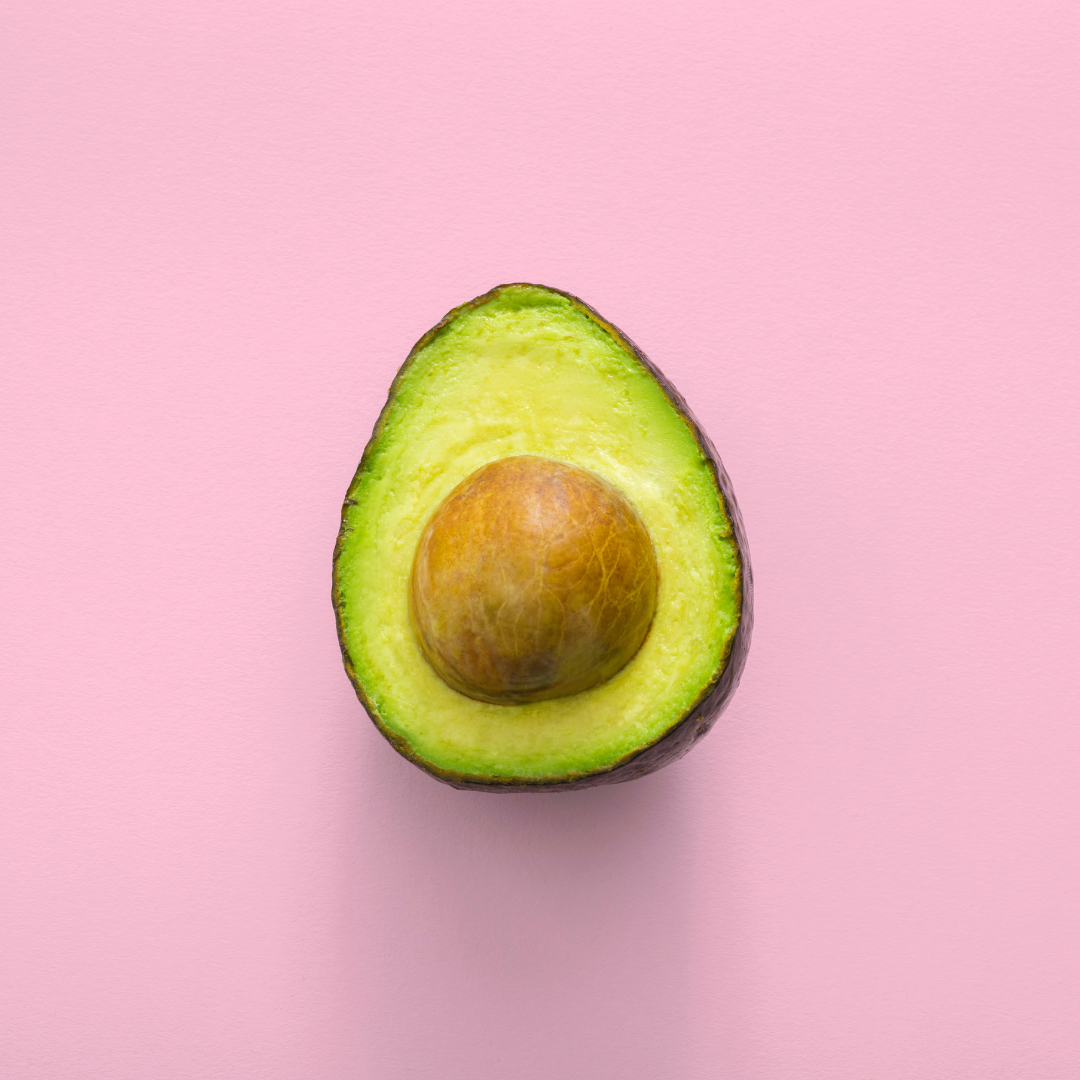
A quick guide to dyestuffs you can use to make natural pink dye.
Because there are so many types of dyestuffs (ingredients) that make pink dye, I’ll go over them quickly.
The most common, and one of my favourites, is avocado skins and stones. They make a beautiful dusty pink while repurposing common kitchen scraps before they hit the compost bin.
Other sources of reddish or pink dye include:
- Plants:
- Bracken fern leaves (Pteridium)
- Some species of Eucalyptus leaves
- Heather (Calluna vulgaris)
- Wood chips or branches:
- Brazilwood (Haematoxylum brasiletto)
- Some species of Eucalyptus
- Red quebracho (Schinopsis lorentzii)
- Willow (Salix)
- Roots:
- Madder (Rubia tinctorum)
- Wild madder (Rubia peregrina)
- Dyer’s woodruff (Asperula tinctoria)
- Lady’s bedstraw (Galium verum)
- Insects:
- Cochineal (Dactylopius coccus)
- Lac (Kerria lacca)
Remember that this list isn’t everything! Researching the natural dyeing history in your local region will give you more information on forage-ready dyestuffs that you can likely find growing in your own community.
If none of the above ingredients are local to you, all hope is not lost! I compiled a list of where to buy natural dye supplies around the world that will hopefully be helpful.
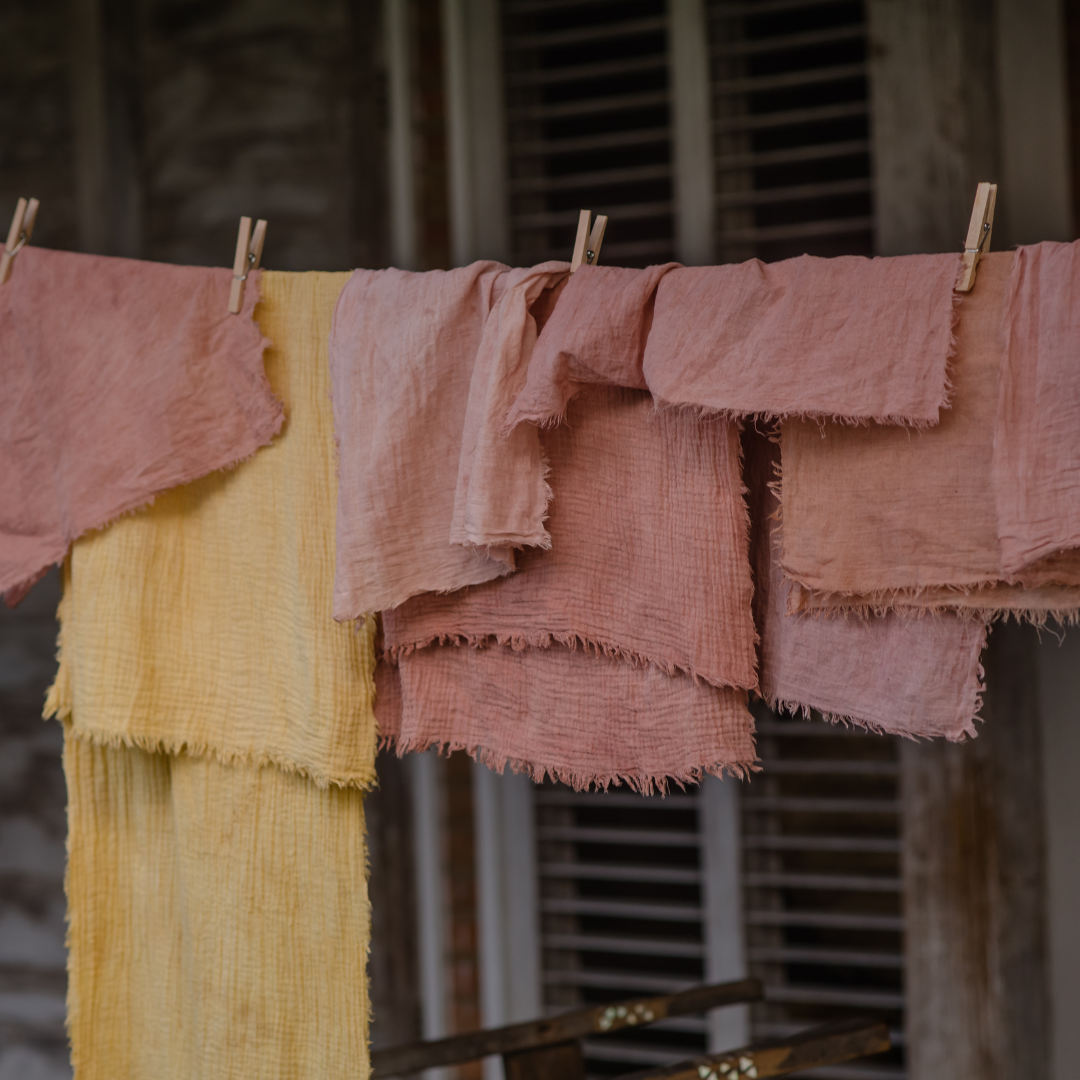
Your list of everything you need to start dyeing with avocado:
Make sure to remove all the green fleshy bits for the best colour.
You will need:
- Natural fibres, either those that come from plants (linen, cotton, hemp, bamboo, etc.) or animals (wool, mohair, alpaca, silk, etc.)
- Your selected dyestuff (in this example, avocado skins and stones)
- A designated dye pot only used for dyeing, never cooking. Can be stainless steel (recommended), aluminium, or unchipped enamel
- Two more bowls or containers used to soak your natural fibres before dyeing and to help you when straining
- A designated wooden or stainless steel spoon, also now retired from cooking activities
- A designated sieve or colander (only used for dyeing)
- A piece of cheesecloth or muslin, for straining
- A designated (only for dyeing) wooden or stainless steel spoon. Or, a wooden stick – the sky’s the limit
- Kitchen scales
That’s everything! Now on to the fun part.
The step-by-step of dyeing with avocado and creating colour pink :
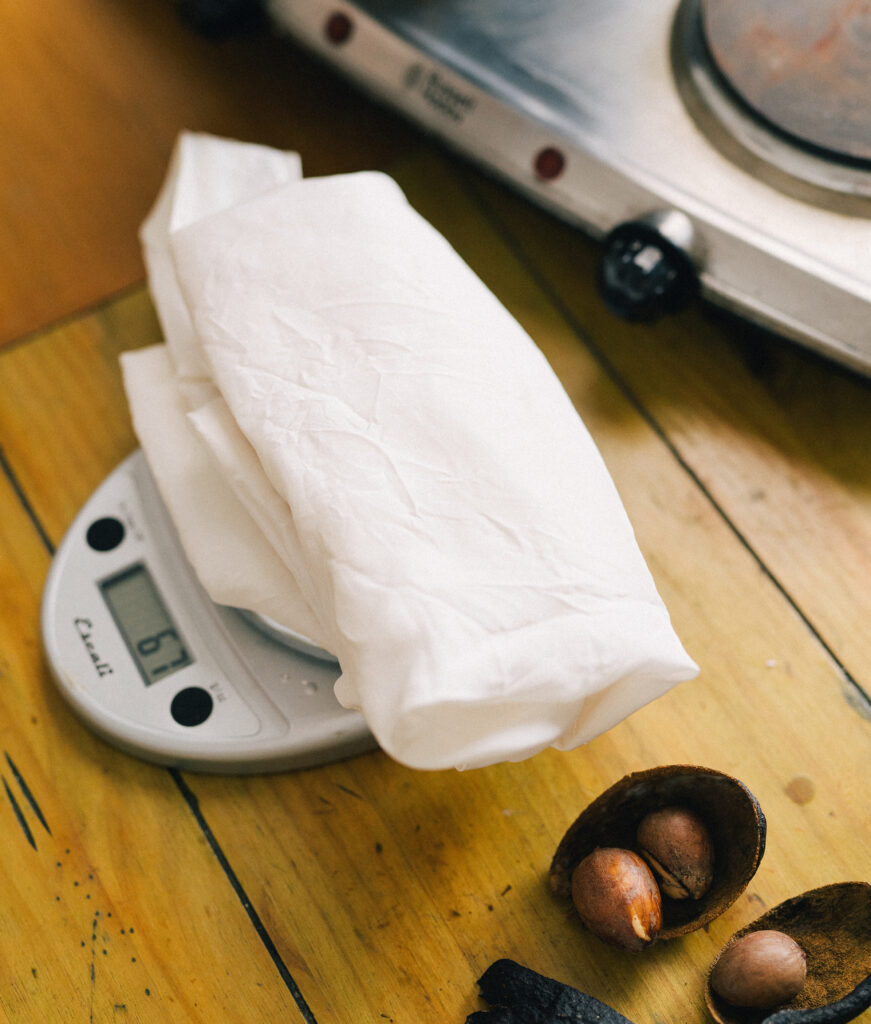
1-Weigh your dry textiles.
Whatever natural fibre clothes or textiles you want to turn pink, weigh them while they’re dry!
Then write that number down: to make your dye, you’ll need about the same weight of fresh dyestuff, or half the weight in dry dyestuffs. However, if you’re using cochineal or lac, you’ll only need 25% of the weight of the dry fibre – they’re quite potent little insects!
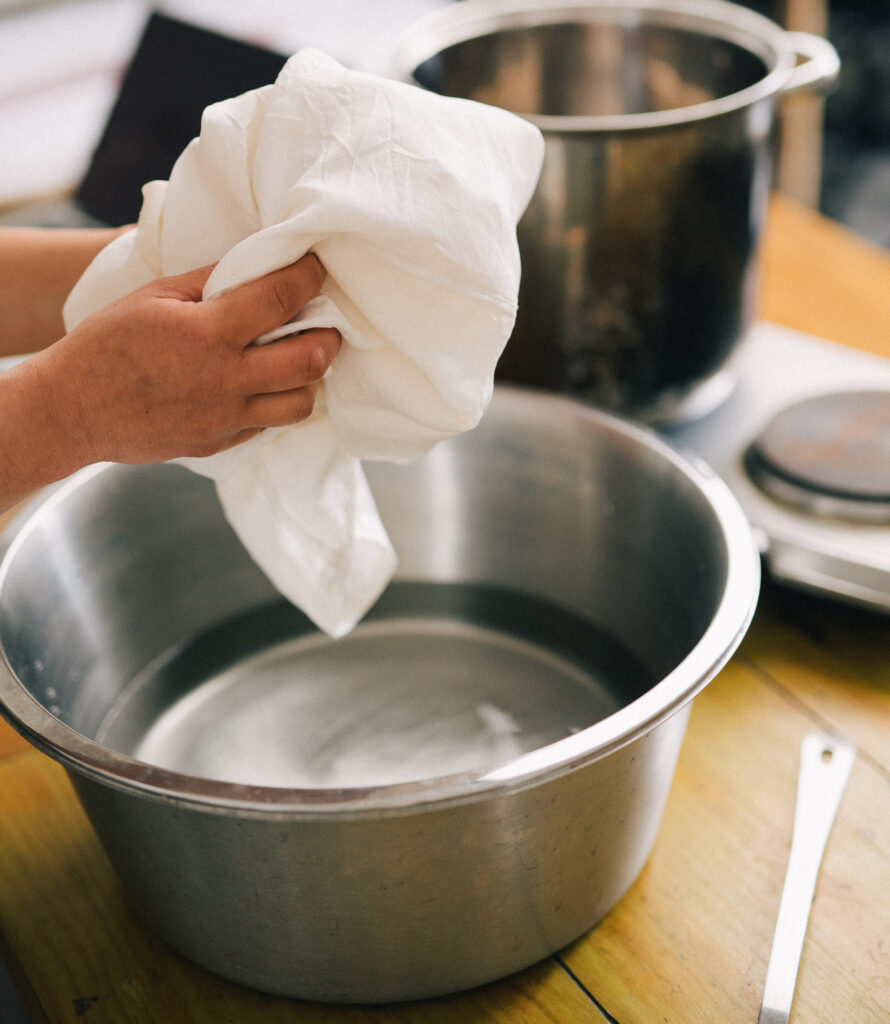
2- Scour and mordant your textiles.
To create more intense colours, and to make them more long-lasting, I recommend you scour and mordant your clothes. I go over this process in detail in my Living Colour with the Five Elements online natural dyeing workshop.
If you want to skip this step, just wash your textile with warm water and plenty of pH-neutral, biodegradable detergent. But keep in mind that the final product won’t be as colourfast as it would be if you had completed the scour and mordanting step!
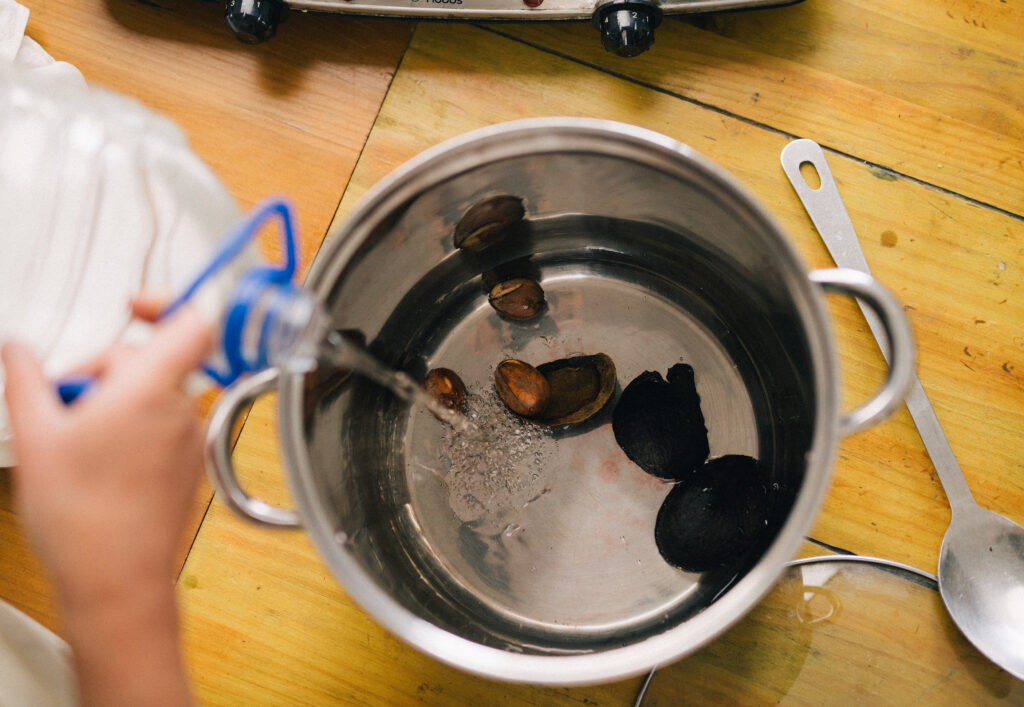
3- Place your dyestuff in your dye pot and add just enough water to cover it.
If possible, use rainwater, as it has less chemicals and treatments. Using tap water is alright, though!
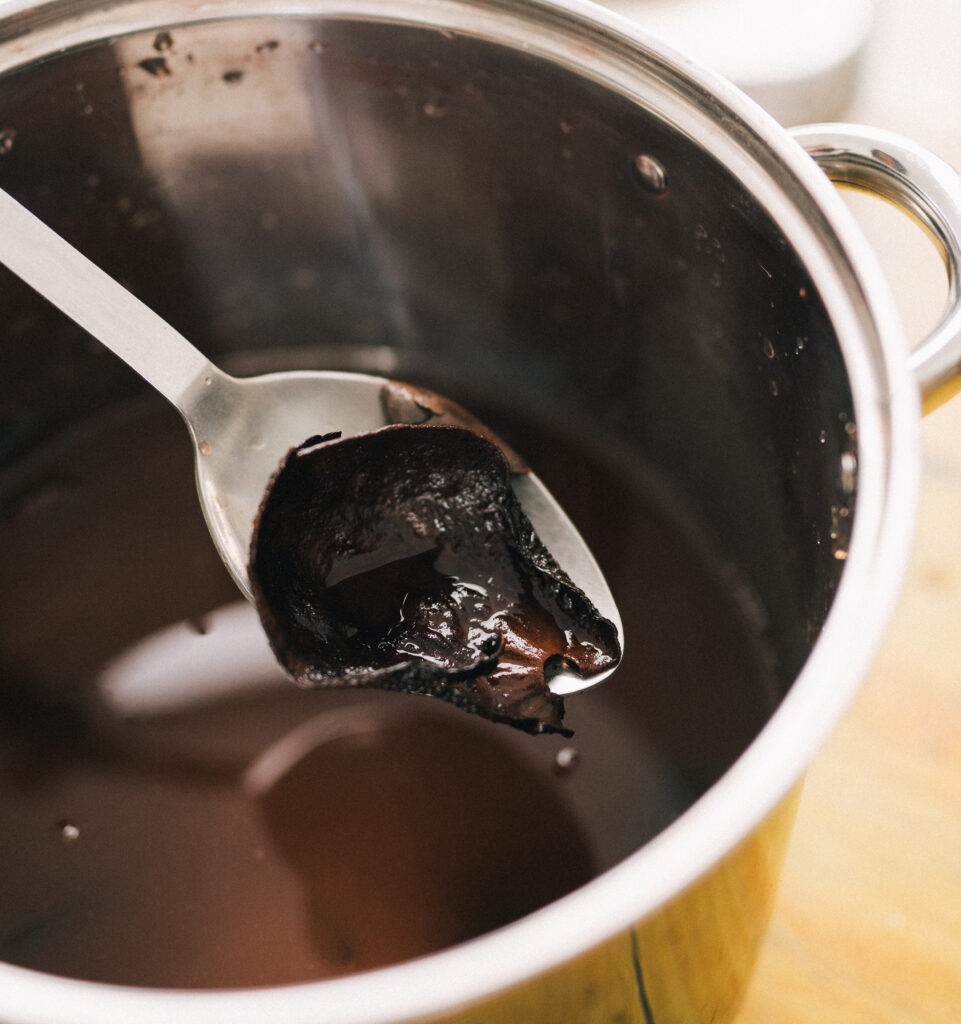
4- Extract the colour from your dyestuffs.
This step will change based on which dyestuff you’re using. But since this example is about dyeing with avocado, you can leave your dyestuffs soaking for at least one night before simmering for an hour. The longer you soak, the more intense the colour.
5- Strain your dye material and keep the liquid – your dye.
Strain the contents of your dye pot through your colander and cheesecloth, then transfer the liquid straightaway back into the dye pot. You can compost your leftover dyestuffs or make a second extraction to obtain a lighter dye.
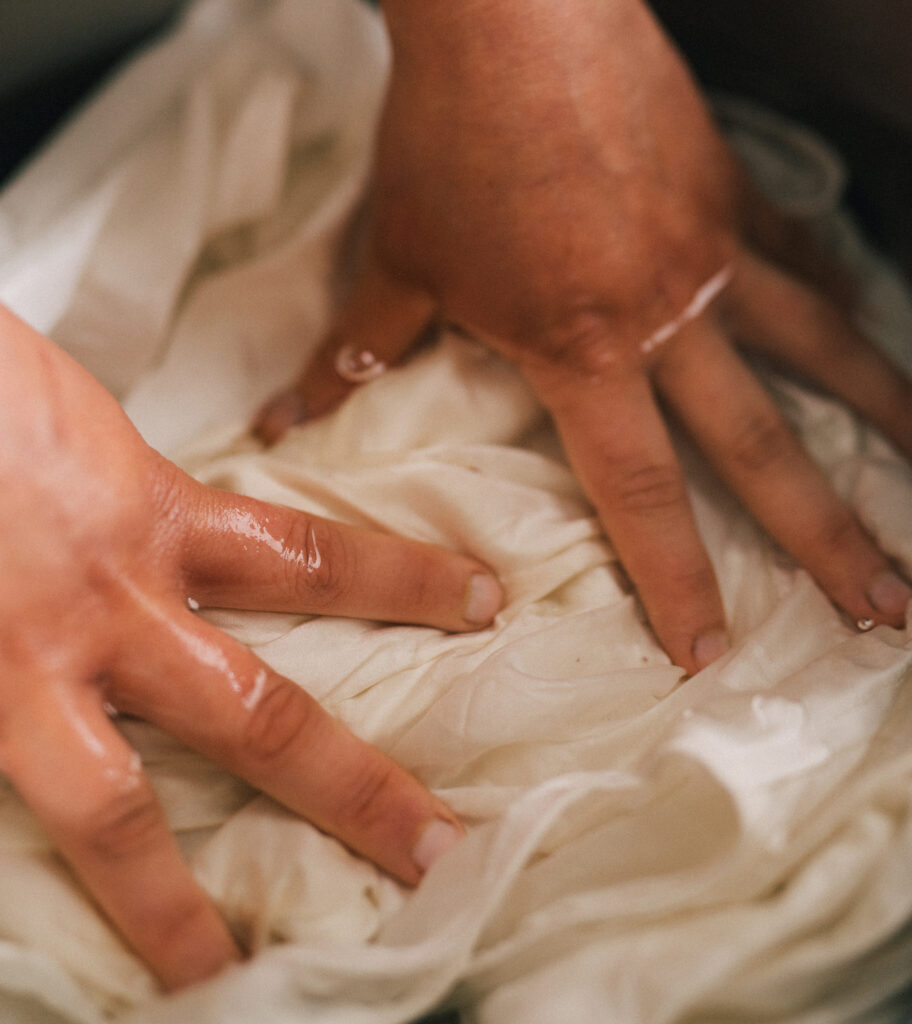
6- Soak your textiles in water for half an hour.
Your natural fibre clothes or textiles should soak in their own bowl in water for 30 minutes prior to dyeing.
7- Add the wet fibres to the dye pot.
If needed, add more water so the fibres are completely covered in the dye and can move freely.
8- Bring the pot to a low simmer and stir.
Stir gently, but constantly so that the dye is absorbed evenly. The dye bath should never go above 60ºC. It should be steaming, but not bubbling!
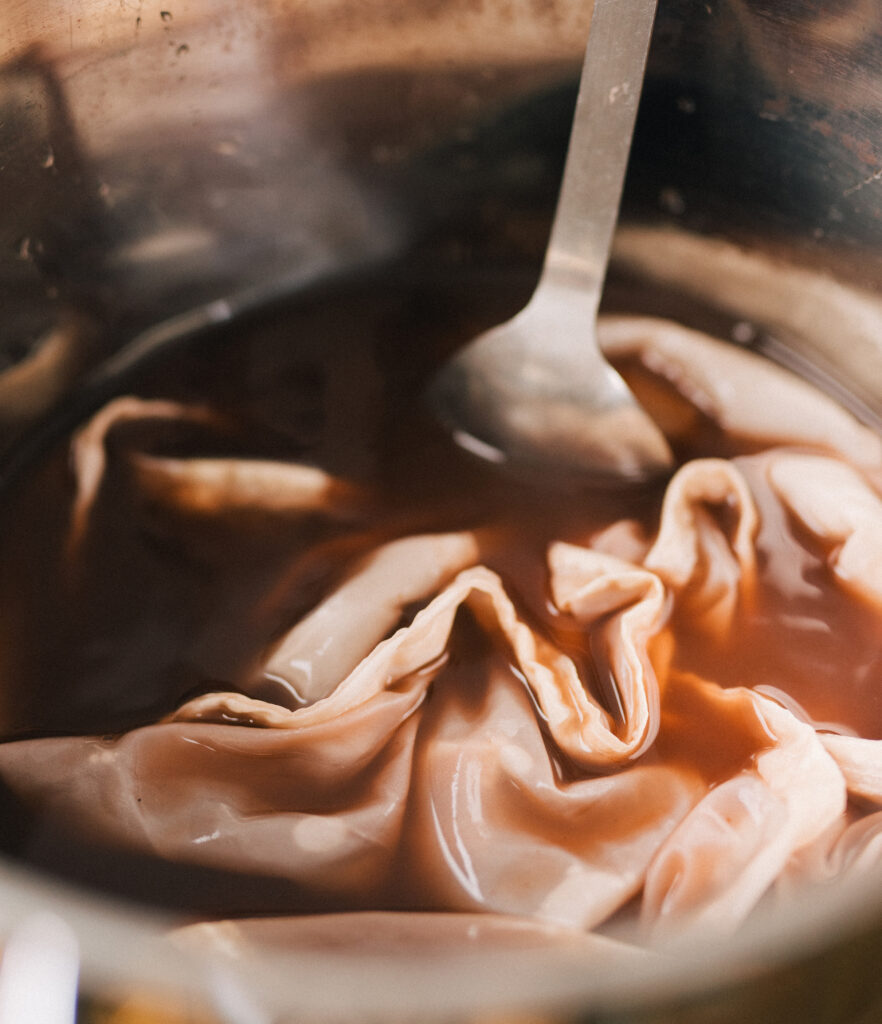
9- After one hour, turn off the heat and leave to steep.
One hour after hitting the simmering point, turn off the heat and let the entire pot contents come down to room temperature. If possible, leave everything to steep overnight with the lid on.
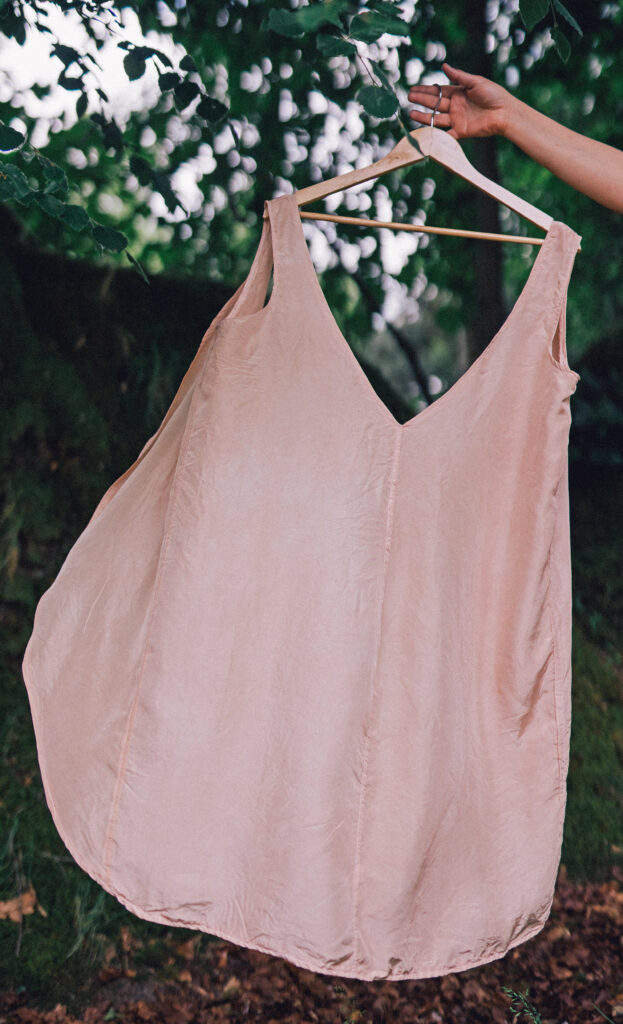
10- Rinse and leave to dry.
Rinse your fibres under running water until it runs clear, and then leave them to dry away from direct sunlight. Wool should always be dried flat.
Ta-da! Pink clothing, naturally dyed using avocado.
These dyestuffs and techniques listed are amazing sources of pink colour, but any natural dyes will begin to fade with use and exposure to light unless you properly scour and mordant your textiles before dyeing.
There’s so much more to learn about dyeing with avocado and using natural dyes than I can say in one blog post. If you’ve caught the natural dye bug and want to start the journey of learning everything you can, why not sign up to our detailed Living Colour with the Five Elements online natural dyeing workshop?
I’ll go over how to scour and mordant, the best practices for preparing your textiles for optimal colour uptake, and teach you how to dye with many, many other dyestuffs to create a true colour story. You can even learn about techniques for different results and textures.
I hope to see you there!
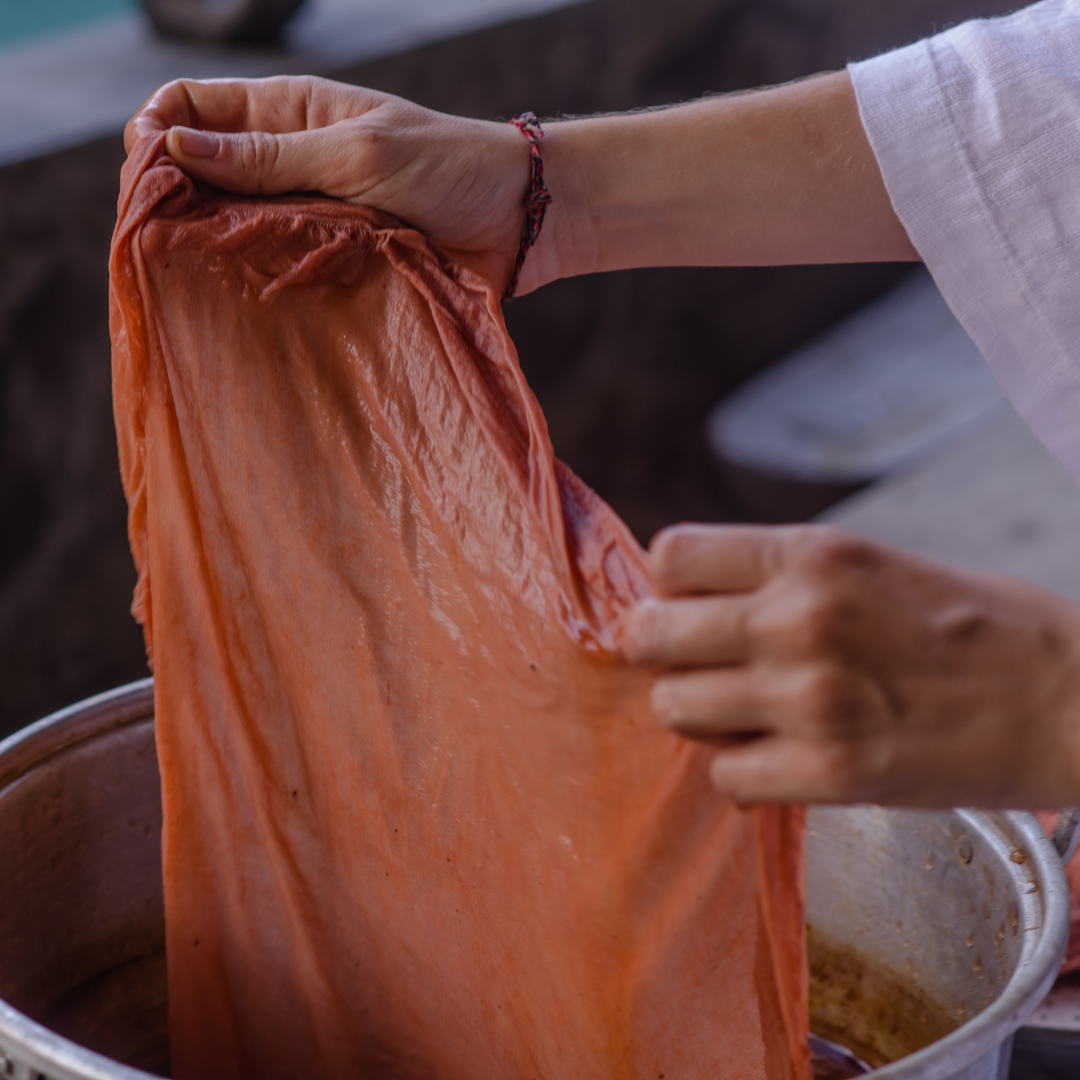
Leaning into native flora and embracing Nature’s talents can help you become a more sustainable person.
The Earth holds a boundless supply of learning moments, raw materials, and opportunities to create something new.
Learning how to dye clothes pink naturally is a tiny, tiny fraction of what even the local natural areas around you have to offer. And once you start, at least for me, it’s hard to stop!
Discover all that you can about the world around you, and you might find yourself becoming a more sustainable person, changing your habits to reflect your newfound knowledge. The thirst for knowledge can never be quenched, and I think that’s exciting!
I hope this inspired you to begin exploring the world of natural dyes. If so, I invite you to keep up with my blog by signing up for my newsletter and get a copy of my free capsule wardrobe guide or, again, sign up for our Living Colour with the Five Elements online natural dyeing workshop.
Now, onward to creating!
Pin this post!
